Why carry out Ecommerce Customer Research? What are the Key Variables Involved in it?
Ecommerce Customer Research is an attempt to understand customers and consumer behaviour who engage in the eCommerce/online shopping journey. For eCommerce entrepreneurs, a pertinent question that they have to answer all the time is – what do customers in eCommerce want? But before they are in a position to answer it, they need to first know about their customers. For instance, if you own an online premium sports shoe brand, it is relevant for you to know the income levels in the target market, the popularity of sports in the region, the availability of sports training facilities, etc. ECommerce Customer Research helps online businesses gain meaningful and relevant insights into their target groups in the target markets.
In this blog, we shall emphasise the key variables involved in eCommerce customer research.
Language-based Grouping
Some poets say that silence is the best language; the rest are all noises. Momentarily, we disagree, especially when it comes to understanding customers better. The languages used by customers play a pivotal role in reaching out and appealing to them. For example, if English is not a popular language in a region, trying to communicate with customers in the English language will be less effective. And that is, to say the least. It may be even taken as an offence. The popular languages must find a priority in web stores, shopping apps, customer support, digital marketing campaigns, press releases, etc. Given below is a snapshot of an eCommerce customer research carried out by YRC depicting language-based clustering of online audiences (social media handles) for a group of competitors in a region.
Visual 01
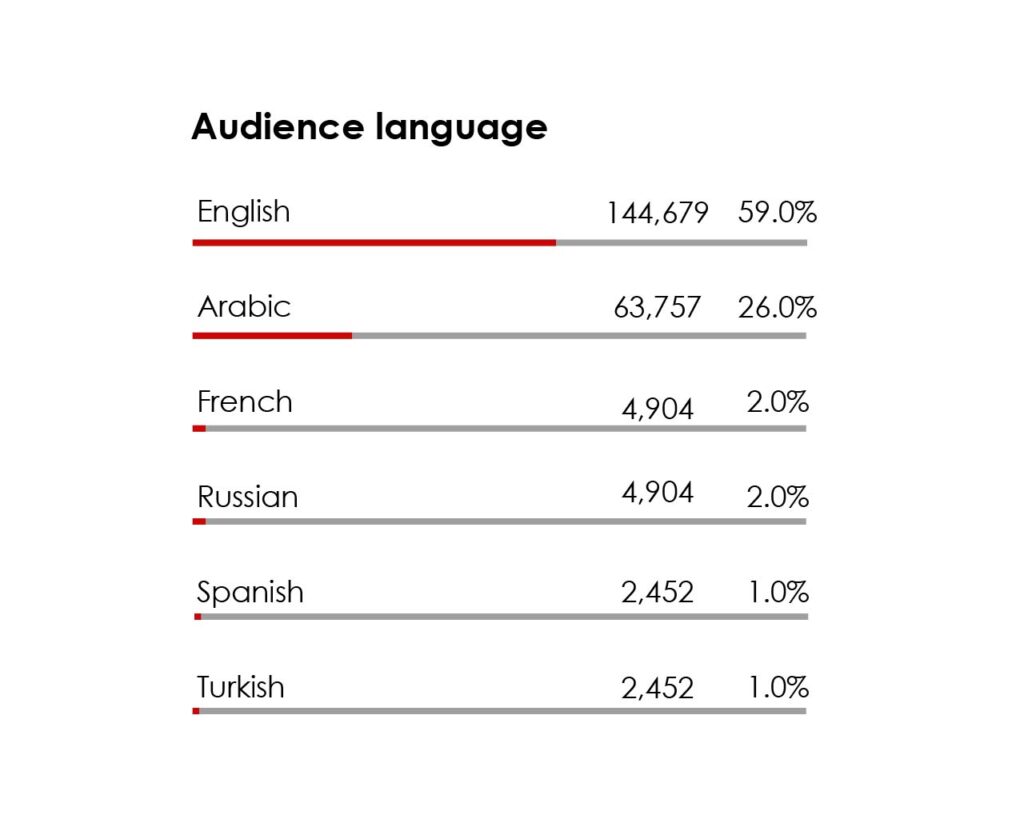
Household Income-based Grouping
Having a fair assessment of the prevailing income levels in a region is helpful for businesses in focusing their merchandising efforts and making their pricing strategies more competitive. In the social media research snapshot below, it could be seen that a majority of households fall in the gross income category of 10-75k. That is a fairly big range. Bear in mind that this is not disposable income. But it provides ample hint that the market has an appetite for a product line with a varied price range. For example, there are many hand sanitiser brands in the online market space. If we consider the data shared in the visual, then, in this case, it could be said with a high degree of certainty that products will be available at a wide range of price points.
Visual 02

Geographical Clustering
In social media geographical clustering, audience users are classified based on countries, states, and cities. For instance, if you are intending to sell smartwatches in another region, it is relevant for you to ask about the activity levels of audiences on various social media handles of your competitors. For example, if a majority of the competing brands have strong social media traction in that region, it would not be difficult for you to gauge that their products and services are popular over there. On the other hand, it is also possible that only one brand is enjoying high popularity or none are. Geographical analyses give you a fair idea of how your competitors are faring in the selected markets. Take a look at the visual below for a quick grasp.
Visual 03
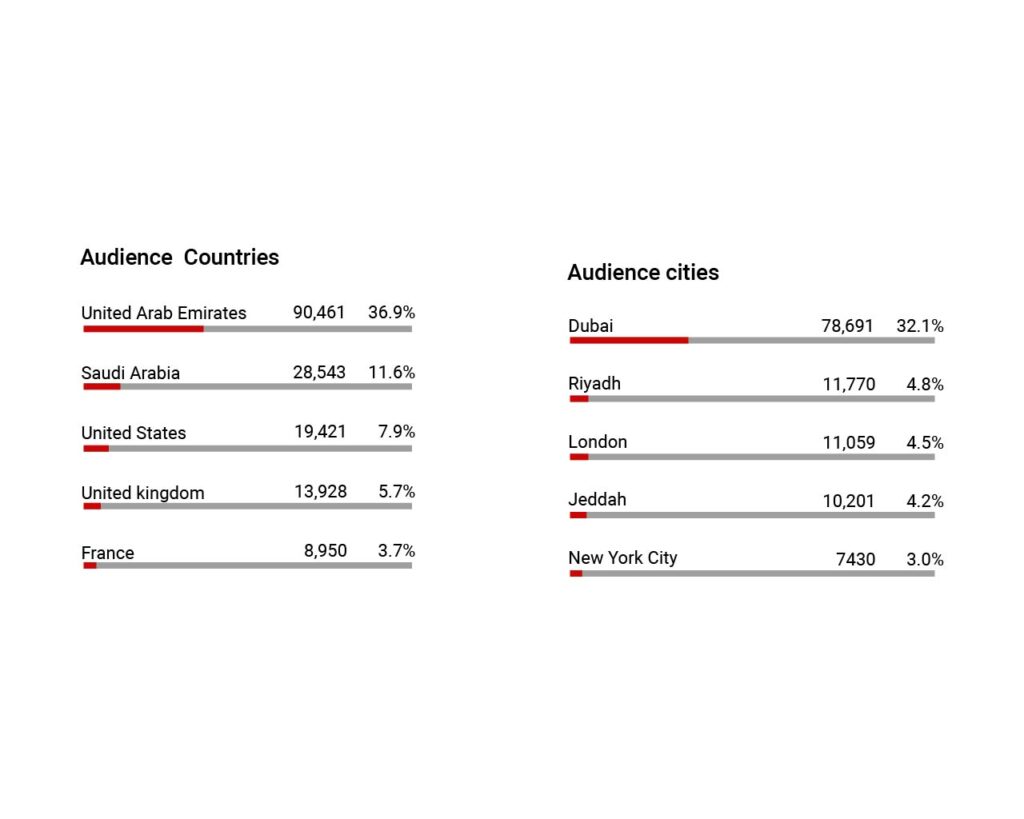
Ethnicity-based Classification
Ethnicity is a critical demographic factor reflecting the long-held cultural and social values. These values have a certain degree of bearing on consumer behaviour. For eCommerce businesses, the key takeaways from ethnicity-based classifications are the major dos and don’ts. Now, for example, eCommerce businesses can initiate promotional campaigns during festival seasons. At the same time, they can also align their marketing and promotional activities with the values and sentiments of the local population. On the other hand, not knowing the cultural and social values and trends in the targeted market regions could end up with wrong demand assessments and merchandising decisions, ineffective advertising, misplaced PR activities, etc. The visual below shows an ethnicity-based grouping in a selected market region.
Visual 04

Grouping based on Age, Gender, and Literacy
Knowing the distribution of age, gender, and literacy rates in the target group helps eCommerce businesses in multiple ways. At the onset, they could directly comprehend whether and which of their products have potentially interested customers in the market. It also becomes easier for them to formulate their marketing strategies encompassing merchandising, pricing, digital marketing, distribution channel, etc. The visual depicts relevant insights for an eCommerce brand whose target group comprises females in the age group of 18-45 years.
Visual 05

Now, the brand wants to find out if social media could be harnessed to promote and sell its products in four selected countries. ECommerce customer research deduces that a large segment of the target group is present on popular social media platforms. This combined with other encircling positives – a very high percentage of the total female population in the age group of 18-45 years, high literacy rates indicating greater independence and higher participation of women in the society and workforce, and nearly half of the total female population in the given age group are online shoppers, indicates at the presence of a strong market for the eCommerce brand.
Grouping based on Preference for Payment Methods
Different customers have different preferences for payment methods. Some customers are okay with all methods. Some are averse to using credit cards. Some prefer masked payment methods like the UPI in India where the payment ID is only a mobile number followed by a three or four-letter domain name. The way customers could prioritise and choose a payment method could be nearly endless. In the bigger picture, these preferences can be clubbed, classified, and segregated for different regions, states, or countries. For example, in the visual below, Cash on Delivery is the most preferred form of payment in the UAE as compared to the other three countries.
Visual 06
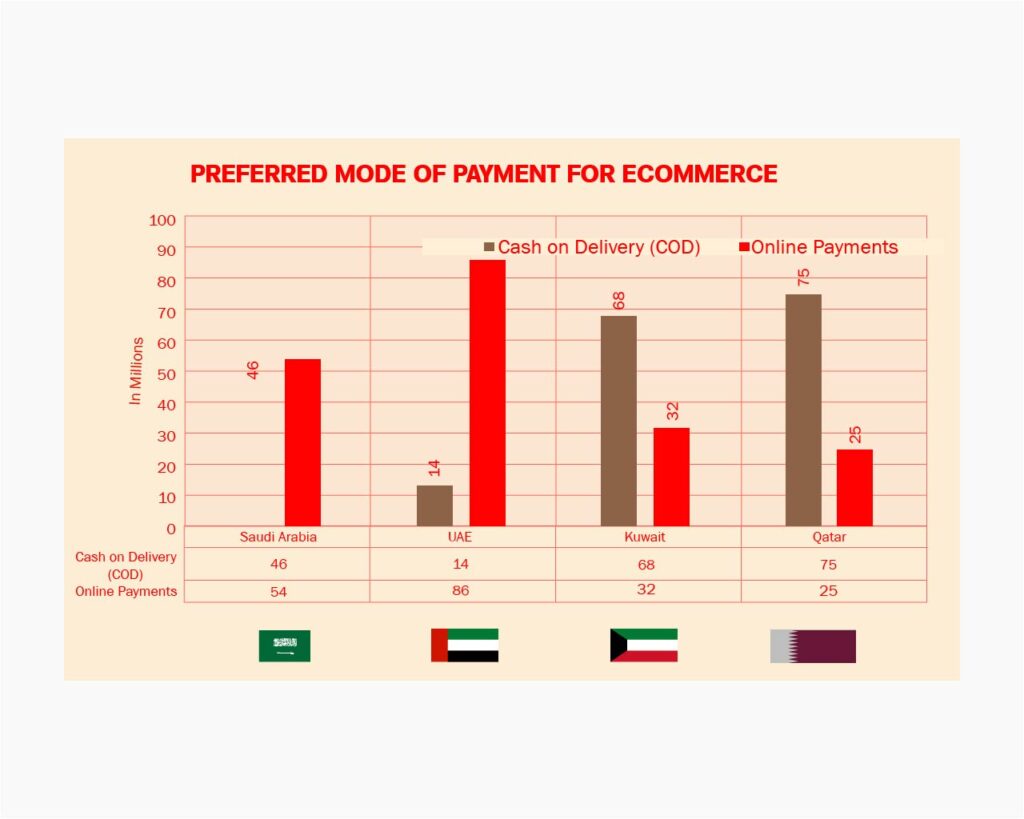
If an eCommerce brand is targeting the UAE market, it should develop strong cash collection and remitting systems at the local levels. Qatar, on the other hand, reflects a contrasting picture. Customers here show more trust in online payment methods. This proportion between online and offline payment method preference has a bearing on working capital management and short-term payment policies and obligations of a company.
Digital Behaviour
Digital behaviour could be treated as a subsection of consumer behaviour. It can cover consumer or target audience behaviour pertaining to social media usage, online product/service search activities, the inclination for online shopping, online payment preferences, and any other behavioural trait that involves a digital medium or touchpoint in the shopping journey. The chart below shows various aspects of the digital behaviour of a target group.
Visual 07
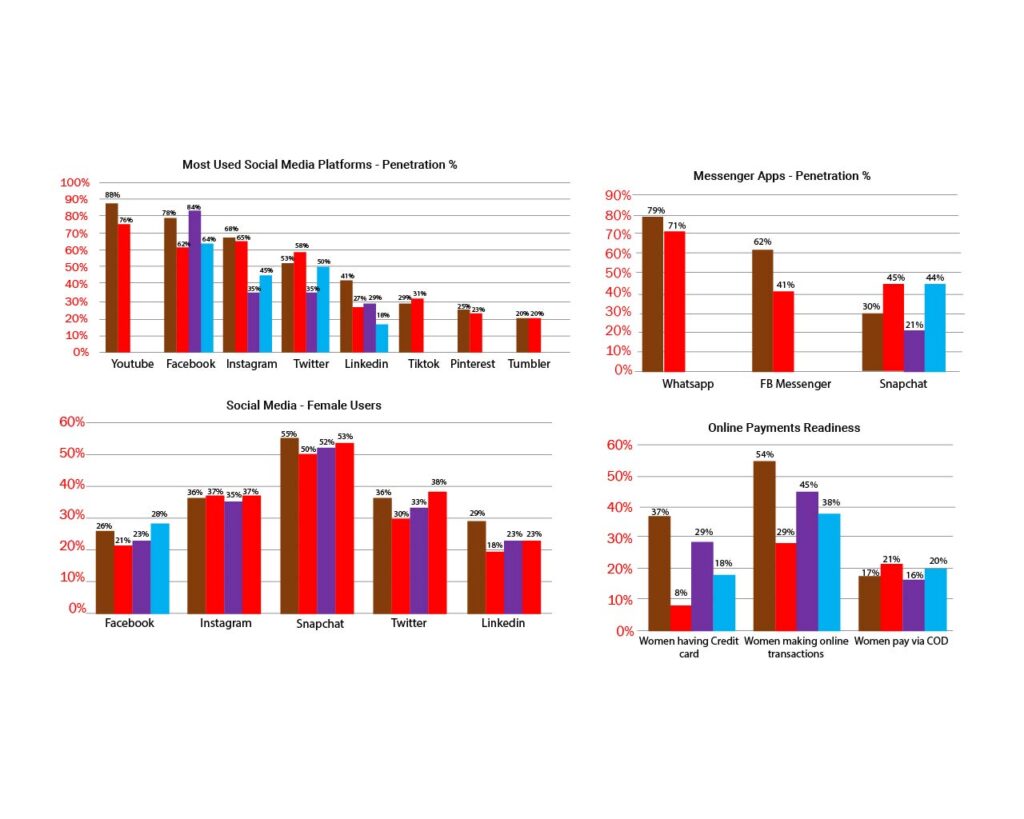
The third quadrant represents social media usage statistics in four countries, say countries A to D, each with a unique colour highlight. Multiple insights are available from this data set. For instance, if the target region is country A (highlighted in brown), YouTube has the highest penetration. That makes the platform suitable for targeted advertising. In the second quadrant, we have the statistics on the popularity of various messenger apps. The fourth quadrant shows a more specific data set of female social media users. And Snapchat emerges as the most popular social media platform for the target group in all the four countries. Coming to the first quadrant, here we have the data set on the target group with readiness for online payment. An important insight from this data is that the percentage of women having credit cards is proportionate to the percentage of women making online transactions in the four countries.
Determination of the Target Group’s Buying Behaviour
An important outcome of eCommerce customer research is that it should enable you to identify and segregate your target groups into the four broad buying behaviour types that are:
Visual 08
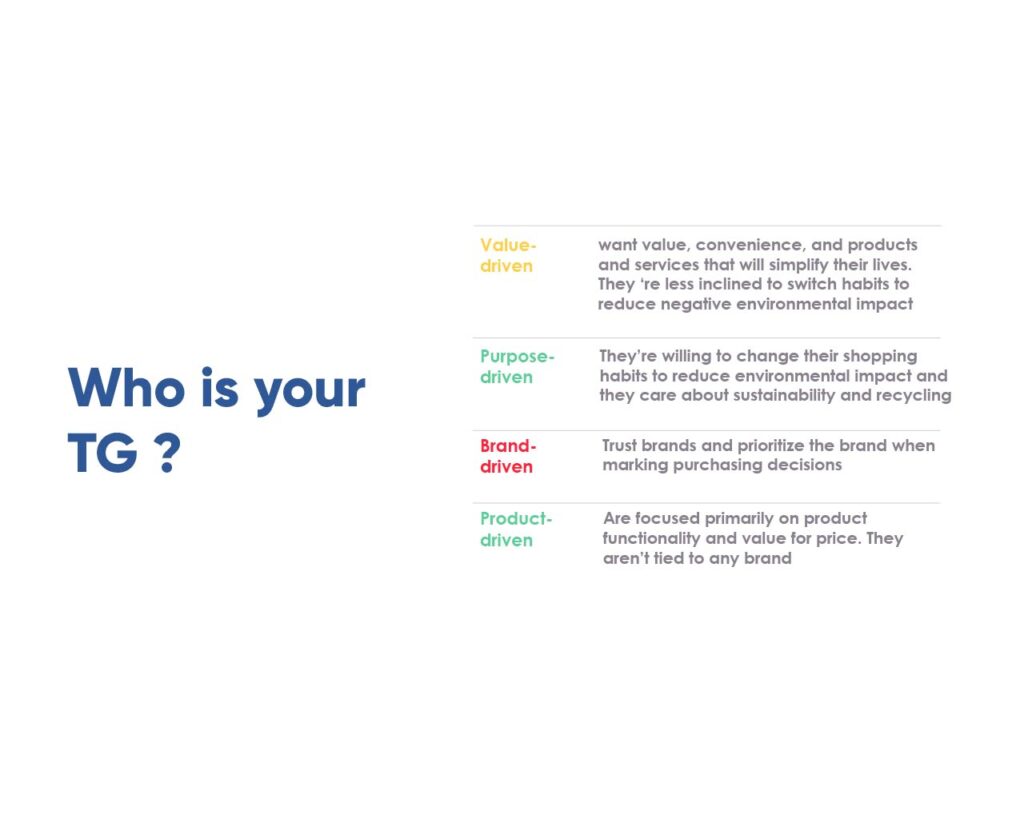
A detailed and objective eCommerce customer research provides everything that is required to define the buying behaviour of the target group with a refined understanding of your customers and their shopping/buying behaviour. But to be able to derive the required insights, expert planning and implementation are required with the use of the right eCommerce market research tools and methodologies with a holistic and strategic approach.
How can we help you?
For service-related enquiries on our retail and eCommerce market research services. To have a quick dialogue with one of our market research consultants please drop us a message on our website and we shall connect with you at the earliest.
Found this blog worth Reading?
If you liked this blog, please visit our blog section and YouTube channel for regular updates and insights on the retail and eCommerce industry.











